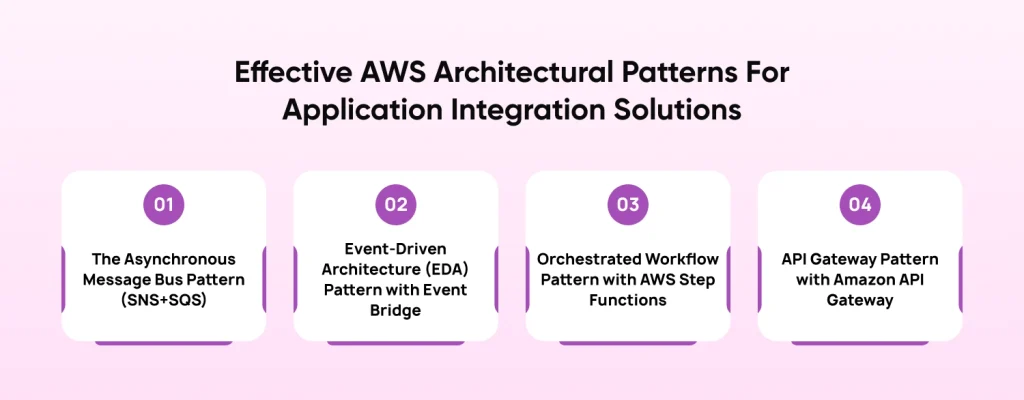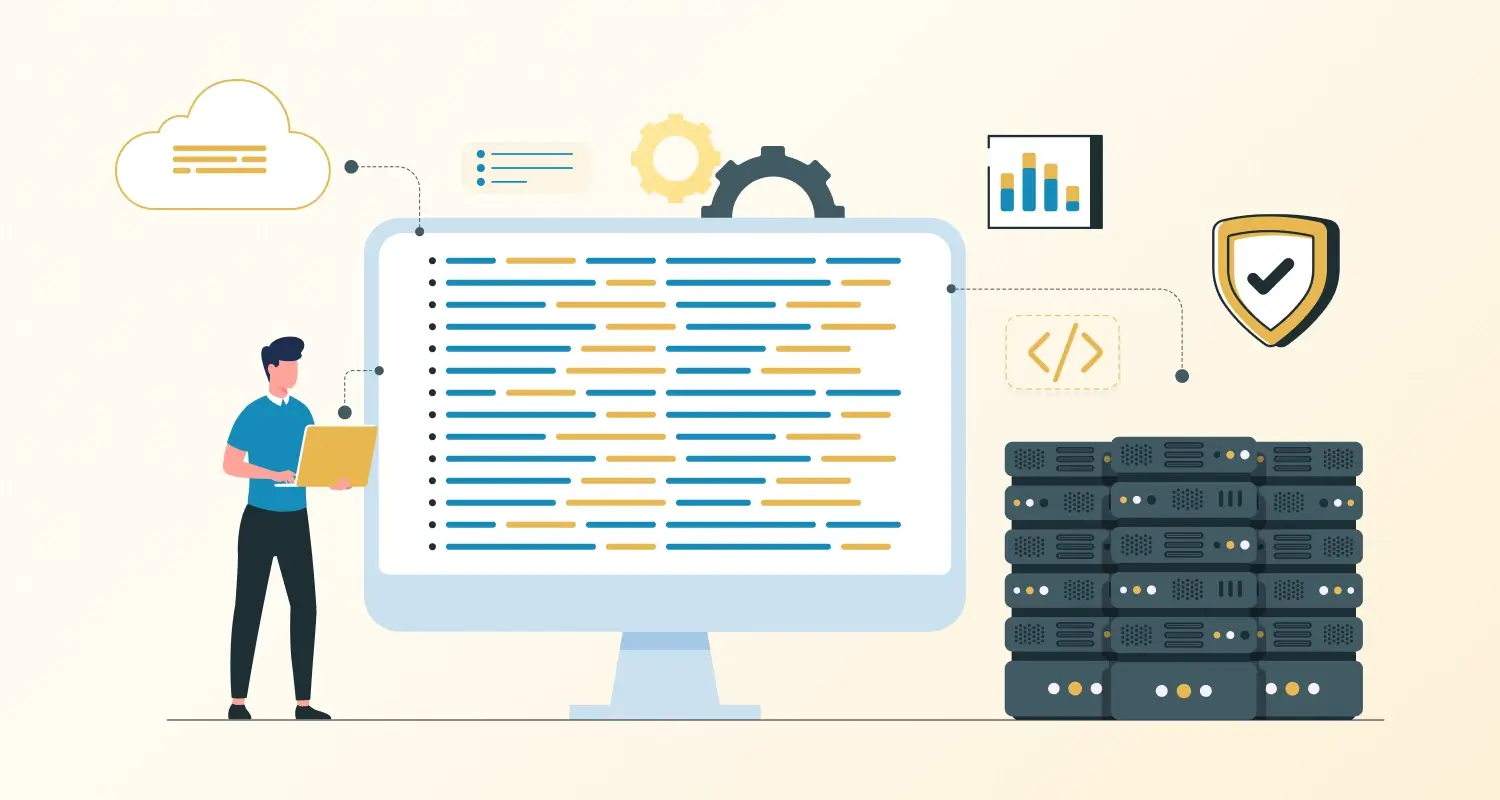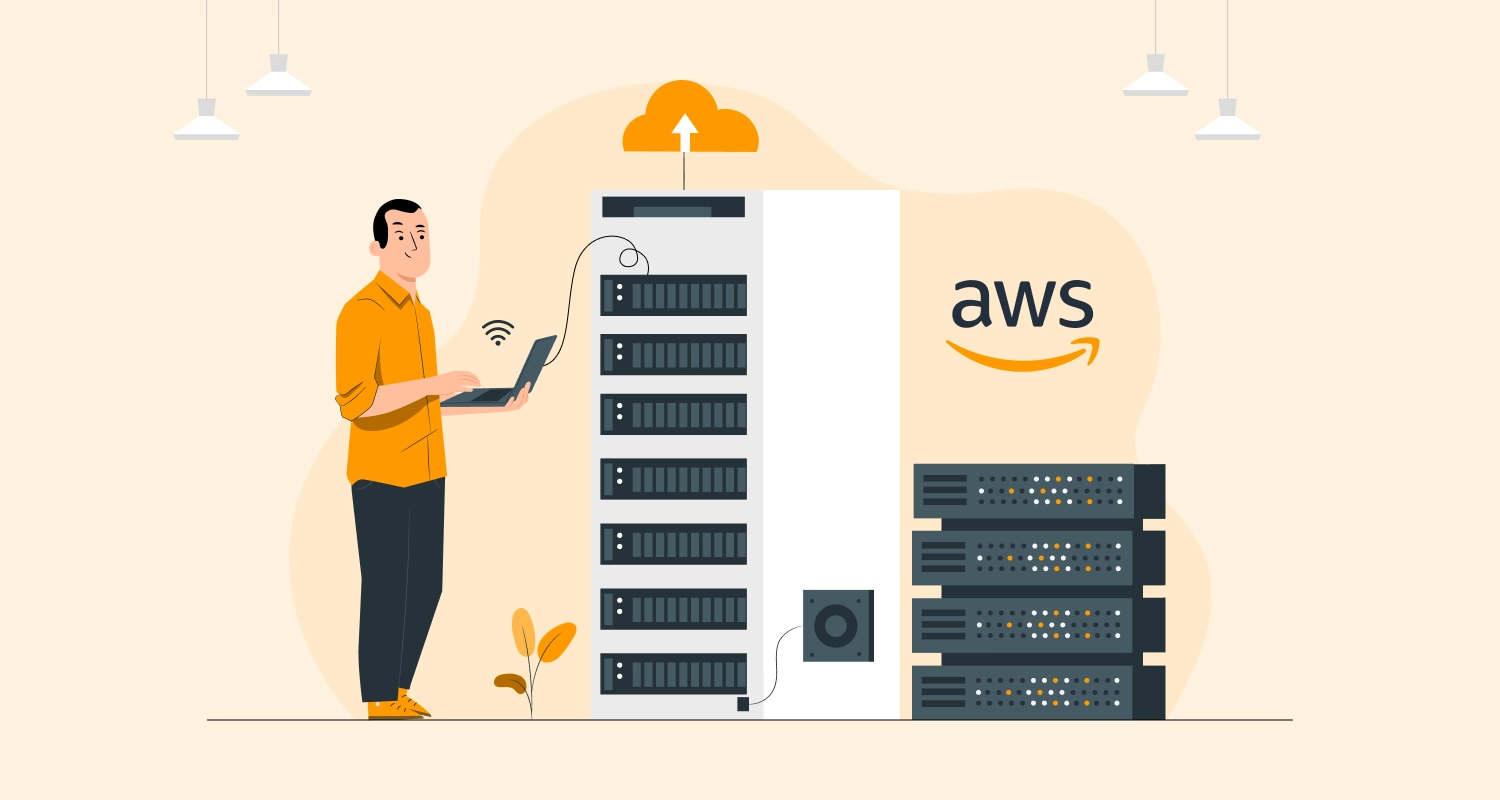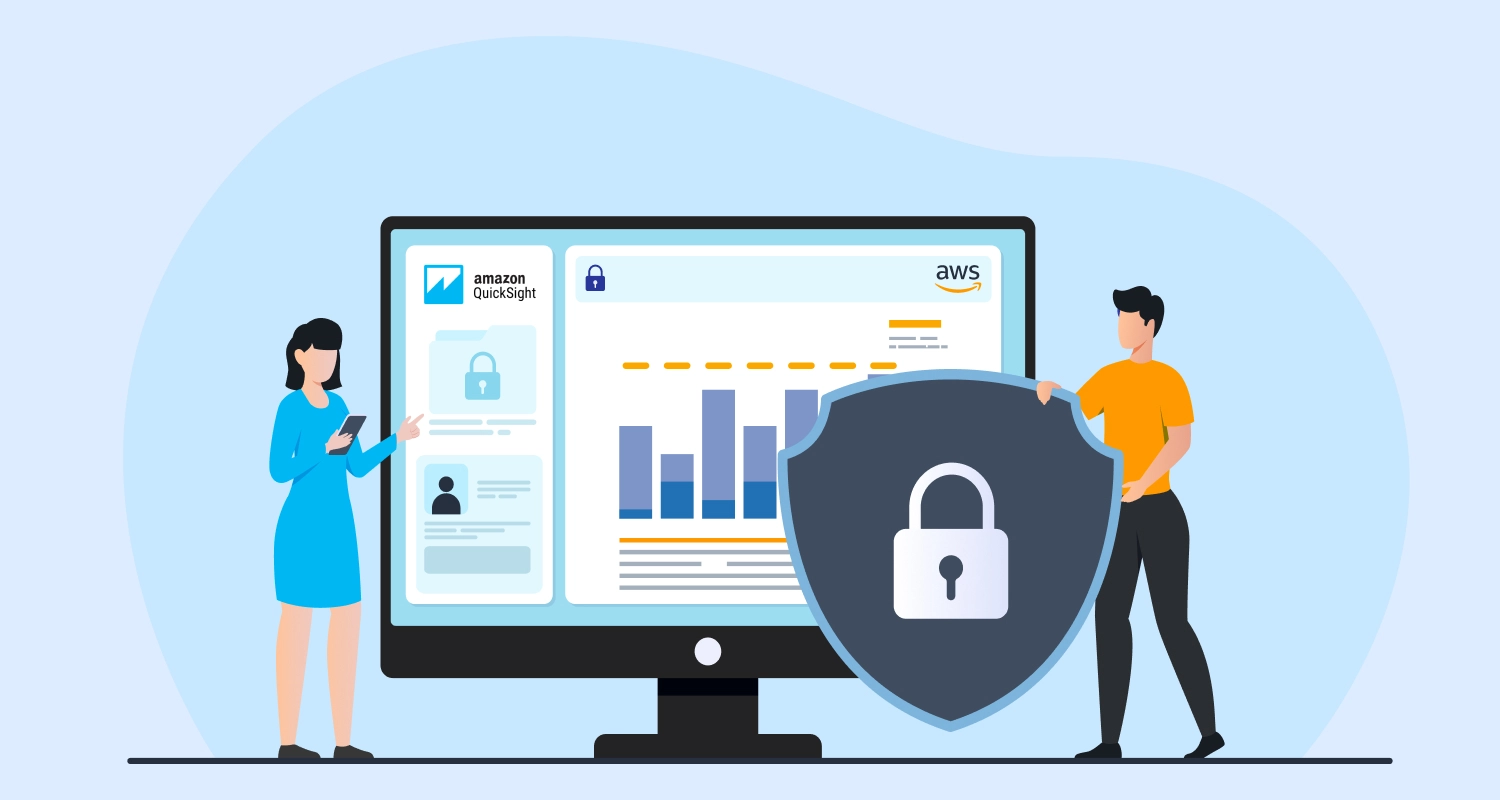Quick Summary: Application integration on AWS is the key to building modern, scalable, and resilient cloud applications. It involves using services like Amazon SQS, SNS, and EventBridge to connect disparate microservices and automate workflows. By focusing on decoupled, asynchronous communication, you can build systems that are more flexible, fault-tolerant, and easier to scale. This approach is essential for staying agile in today’s fast-paced cloud-first world.
Ever notice how the most reliable, large-scale applications seem to work together effortlessly? Their secret lies in the way different components communicate behind the scenes. In a cloud-first environment, very few applications operate in isolation. All applications need to share information, trigger actions, and connect with each other in a seamlessly architected ecosystem. This is where mastering application integration AWS can be a great asset. This helps organizations link applications, automate key processes, and scale integrations without unnecessary complexity.
To truly unlock these benefits, you need more than just the right services, you need a clear strategy for how applications communicate and work together. From understanding the core principles of application integration on AWS, the challenges it solves, to the patterns that make systems scalable and resilient, we will discuss it all.
The Core Concepts of Cloud Integration
To understand the how and when of cloud integration, it is important to first address why cloud integration and what cloud integration is.
Why Mastering Application Integration on AWS Is No Longer Optional
The shift towards cloud-native architectures, which often use microservices and serverless functions, has made well-defined application integration solutions essential. Breaking apart big, monolithic applications into smaller services brings many benefits. For instance, it makes development faster, it also improves scaling. Moreover, it gives teams more flexibility. But it also creates a challenge, making sure those services can communicate smoothly.
The cloud integration market is experiencing explosive growth, forecast to reach $9.8 billion by 2030 with a compound annual growth rate of 14.20% , highlighting the critical importance of mastering these integration strategies.
Effective application integration on AWS solves this, helping you achieve:
- Increased Agility: Teams can develop and deploy services independently, which means faster innovation and quicker release cycles. You’re not waiting on one massive team to finish a project; small teams can work in parallel.
- Enhanced Scalability: You can scale individual services based on their specific needs. One of the many integration on AWS examples can be – if your checkout service gets a lot of traffic on Black Friday, you can scale just that service without having to beef up your entire application. This optimizes resource usage and keeps costs down.
- Improved System Resilience: A well-integrated system is designed for failure. With a proper fault isolation mechanism in place, if one service fails, it still doesn’t impact the other aspects or parts of the system, and the system can continue operating just as intended.
- Data Consistency: Integrated systems can maintain data consistency across different services. This is crucial for business intelligence, reporting, and making sure everyone in your company is looking at the same, correct information.
- Improved Workflows: You can automate complex processes that span multiple applications and services, which leads to increased efficiency and less manual work.
What are the Fundamental Integration Paradigms
At its heart, all AWS application integration falls into two main categories: synchronous and asynchronous. We should have proper understanding of synchronous vs asynchronous integrations in AWS:
Synchronous Integration
This is a “wait-and-get” approach. When one service (the client) calls another (the server), it waits for a response to continue its own work. Think of it like a phone call: you dial, you wait for the other person to answer, you have a conversation, and then you hang up. This is great when you need an immediate response, but it can create tight coupling and make your system vulnerable to cascading failures. If the server is slow or down, the client gets stuck.
Asynchronous Integration
Asynchronous Integration This is a “send-and-forget” approach. The client sends a message or event and then immediately goes back to its own tasks, without waiting for a response. Think of it like sending a text message: you send it, and you assume the other person will get it and read it eventually. This pattern is essential for creating loosely coupled, resilient, and scalable systems. Here the sender and receiver don’t need to be available concurrently, even if one service fails, it won’t block others. This is the paradigm followed by most cloud application development architectures.
A Deep Dive into AWS Integration Services
AWS integration tools provide a complete suite of services that make it easy to implement both synchronous and asynchronous integration patterns. Let’s take a closer look at the most important ones.
1. Amazon SQS: Reliable Asynchronous Messaging for Applications
Amazon SQS is a completely managed message queuing service that lets developers send, store, and receive messages between different business applications with no volume limitation. It acts as a buffer between different components, and allows components to send and receive messages asynchronously. These queues are very durable and have high availability, thus ensuring the user that the messages won’t get lost.
Standard vs. FIFO Queues
SQS offers two types of queues to fit different needs. Here’s a quick comparison:
| Feature | Standard Queue | FIFO (First-In-First-Out) Queue |
| Message Ordering | Best-effort ordering; messages may arrive out of order. | Strictly maintains the order of messages sent and received. |
| Deduplication | Not guaranteed. Messages might be delivered more than once. | Exactly-once processing is guaranteed. |
| Throughput | High. Virtually unlimited. | High, but capped at 300 transactions per second (or 3,000 with batching) per API action. |
| Use Cases | High-throughput, non-critical tasks (e.g., logging, image processing). | When message order and exactly-once processing are critical (e.g., financial transactions). |
Building Fault-Tolerant Systems with Amazon SQS
The magic of SQS is in decoupling. Imagine an e-commerce application. A user places an order. The order service, instead of directly calling a slow, external payment processing service, simply sends a message to an SQS queue. The order service can then immediately tell the user “Your order has been placed” and move on. A separate worker service can then pick up that message from the queue and process the payment when it’s ready. If the payment service is down for a moment, the messages just sit safely in the queue and get processed once it’s back online. This prevents a slow or failing external service from impacting the user experience.
2. How Amazon SNS Delivers Messages Instantly
SNS is a publisher/subscriber messaging service. It’s the perfect tool for fanning out messages to multiple receivers at once.
The Publisher/Subscriber Model
SNS allows developers to create a “topic” that acts as the central communication channel. Then a service (the publisher) sends a message to that topic. All the services or endpoints (the subscribers) that would be “subscribed” to that topic, will receive the updates and messages.
The subscriber can be anything from SQS queues and Lambda functions, to even email addresses or mobile push notifications. Amazon SNS is a powerful AWS tool to build event-driven architectures when one event can trigger multiple actions.
SNS Use Case: Notifications and Alerts
A classic use case is a system that needs to send multiple notifications for a single event. When a new user signs up, your user service can publish a “NewUserRegistered” message to an SNS topic. This single message can trigger a Lambda function to send a welcome email, a different Lambda function to create a profile entry, and a mobile push notification to an admin. All of this happens instantly and in parallel, without any tight coupling between the services.

3. Building Reliable Workflows with AWS Step Functions
AWS Step Functions provide a serverless orchestration service that manages multiple AWS services into a unified workflow. It is ideal for clients looking to manage a multi-step business process that requires complex conditional logic and error handling capabilities.
The State Machine Approach
With Step Functions, you define your workflow visually using a state machine. Each step in the workflow is a state, and you can define different state types, such as Task (which performs an action like invoking a Lambda function), Choice (which adds conditional logic), and Wait (which pauses the workflow for a specified time). Step Functions then manages the execution, handles errors, and retries failed steps for you.
Built-in Error Handling
One of the biggest green flags for Amazon Step Functions is its ability to handle errors. Developers can define the Catch blocks to handle very specific errors and Retry blocks to automate retrying failed steps. Such features make it easier to build more resilient workflows without needing to write error handling logic manually. Organizations often hire AWS Lambda developers to implement these sophisticated workflow patterns effectively.
4. Connecting AWS Services and Saas with AWS EventBridge
EventBridge is a serverless event bus that acts as a central nervous system for your applications. It makes it easy to connect your applications with data from AWS integration services, your own custom applications, and third-party SaaS partners.
Event Buses and Rules
EventBridge works by routing events from a source to a target. The events are sent to an event bus. You define rules that filter for specific events and then route them to the appropriate targets, such as a Lambda function, an SQS queue, or another service. The real power of EventBridge is its ability to route events from over 100 different AWS services and a growing number of SaaS partners, all with minimal code.
Use Case: Real-time Data Processing
Imagine you have a system that needs to react to changes in an S3 bucket. With EventBridge, you can set up a rule that listens for the “Object Created” event from S3 and routes it to a Lambda function. That Lambda function can then trigger a data processing pipeline, all in real time and without any direct integration code.
5. How to use Amazon API Gateway for Simplifying API Management at Scale
API Gateway as part of API integration services is a completely managed service by Amazon which acts as the single point of entry for your backend services. It allows you to create, publish, and secure APIs at any scale.
The Front Door for Your APIs
API Gateway is key for connecting services in real time. It brings your backend such as microservices running on AWS Lambda, together as a single, unified API. It manages all the boilerplate and repetitive setup configurations, so your services can focus on doing what they do best
Key Features:
API Gateway offers a lot of useful features right out of the box:
- Request Routing: It routes incoming requests to the appropriate backend service.
- Authentication and Authorization: It aligns with IAM and AWS Cognito to protect your APIs.
- Throttling: It protects your backend services from being bogged down with excessive requests.
- Caching: It can cache results to lighten the load on your services and enhance performance.
- API Versioning: It allows you to handle various versions of your API while maintaining backward compatibility as you revise your services.
6. How AWS AppSync Streamlines API Development for Modern Apps
AppSync is a managed service that makes it easy to create GraphQL APIs. It provides a powerful alternative to traditional REST APIs, especially for mobile and AWS services for web applications.
The Power of GraphQL
Unlike REST, where a client often has to make multiple API calls to get all the data it needs, GraphQL lets a client ask for exactly the data it needs from a single endpoint. Doing so reduces network traffic thus improving performance for data-heavy applications.
Data Sources and Resolvers
AppSync handles the heavy lifting of connecting your GraphQL API to various data sources, including Amazon DynamoDB, Amazon Aurora, Elasticsearch, and AWS Lambda functions. When a client sends a GraphQL query, AppSync uses resolvers to fetch data from the configured sources. This makes it easier to build a unified API capable of pulling and fetching data from multiple resources. Teams can hire AWS developers to implement these complex GraphQL architectures efficiently.
Effective AWS Architectural Patterns For Application Integration Solutions

The Asynchronous Message Bus Pattern (SNS+SQS)
This pattern is all about decoupling services with AWS SNS and SQS. One service publishes a message to an SNS topic, and an SQS queue is subscribed to that topic. A worker service then processes the messages in the queue. This pattern ensures that the publisher is not blocked by the consumer and allows for fan-out messaging to multiple consumers.
Event-Driven Architecture (EDA) Pattern with EventBridge
An Event-Driven Architecture is a modern pattern where services communicate by producing and consuming events. EventBridge is the ideal tool for this. Events are sent to the event bus, and rules on the bus route them to various targets. This pattern fosters extreme loose coupling and allows your system to be highly reactive and scalable. A new service can simply subscribe to events it’s interested in without needing to know anything about the services that produce them.
Orchestrated Workflow Pattern with AWS Step Functions
For complex business processes, the orchestrated workflow pattern with AWS Step Functions is invaluable. Instead of writing complex, imperative code to manage a multi-step process, you visually define the workflow in a state machine. This makes the logic clear, auditable, and much easier to maintain. It’s perfect for processes like an automated user onboarding flow, a media processing pipeline, or a multi-step data transformation job.
API Gateway Pattern with Amazon API Gateway
The Amazon API Gateway acts as a single, secure entry point to all services. It directs all incoming requests to the best suited backend microservices, handles security, and also provides management features. This pattern allows you to build a clean API layer on top of a complex, distributed backend. Companies looking to develop a highly scalable app using AWS often implement this pattern for maximum efficiency.
AWS Integration Best Practices: Security, Reliability, and Scalability
Building a well-integrated cloud workflow requires more than just knowing the services. Here are some best practices to follow.
Focus and Prioritize Decoupling
Always strive for the highest degree of decoupling possible. Use asynchronous messaging with SQS and SNS wherever you don’t need an immediate, real-time response. This will make your system more resilient, scalable, and easier to manage.
Design Your AWS Integrations for Failure from Day One
Your applications and integration patterns will fail at some point. It’s not a matter of if, but when. So you need to ensure you keep corrective systems and actions in place for when it happens.
- Make use of Dead-Letter Queues (DLQs): For SQS and SNS, always configure a DLQ to capture messages that cannot be processed successfully. This gives you a chance to inspect and re-process them later.
- Implement Proper Retry Mechanisms: Use the built-in retry policies in Step Functions or implement your own for Lambda functions to handle transient errors gracefully.
- Consider Using a Circuit Breaker Pattern: Make use of synchronous calls using API Gateway, and implement a circuit breaker for preventing any failing service to cause a domino effect on the complete system.
Implement Security Best Practices for Application Integration on AWS
When working on application integration on AWS, security should take first and top priority. Make sure your dedicated AWS engineers can configure access and protect data for keeping workflows secure, reliable, and compliant. Here are a few ways you can do so:
- Use IAM Roles: Define and use fine-grained IAM roles to control which services can talk to each other. For example, a Lambda function should only have permission to publish messages to a specific SNS topic, and nothing else.
- Encrypt Data: Make use of proper encryption standards for securing data in rest and even in transit.
Monitor, Audit, and Secure Your AWS Integration
In sophisticated AWS environments, it’s simple to lose sight of what’s going on between several services. Without adequate monitoring and logging, you may not be aware of a problem until your users are impacted.
- Use CloudWatch: AWS CloudWatch is your best friend. Use it to monitor metrics for all your application integration services AWS. Track the number of messages in your SQS queues, the number of successful API calls, and the error counts for your Lambda functions.
- Enable AWS CloudTrail: Use AWS CloudTrail to log all API calls in your AWS account. This provides a complete audit trail of who did what, when, and where.
Start Simple, Then Scale
Don’t over-engineer your AWS application integration services solutions from the start. Use a basic integration pattern and then add more complexity as your needs grow. Start with a simple SQS queue and then add SNS and EventBridge later if you need more sophisticated event routing.
Embrace Infrastructure as Code (IaC)
Utilize tools like AWS CloudFormation or AWS CDK (Cloud Development Kit) to define your integration environment. This will allow you to duplicate your setup. This will allow you to monitor changes via version control. Many organizations AWS serverless app development teams use IaC to maintain consistency across environments.
Final Words
Application integration on AWS is not just a technical capability, it’s an attitude. It’s creating new, robust, and flexible systems. With knowledge of AWS data integration tools and the patterns they enable, applications can talk and pass messages seamlessly, even in complicated workflows. As the cloud platform expands, having a well-defined integration strategy becomes critical. For organizations looking to implement comprehensive API Integration Services or build modern applications, considering AWS Amplify development services can provide additional frontend capabilities. Adhering to these best practices allows teams to build powerful, linked systems that transform with ease to shifting business requirements and deliver true value.
AWS Application Integration FAQs
Which AWS Services Are Used for Application Integration?
Key services include SQS for message queuing, SNS for notifications, Step Functions for workflows, EventBridge for events, and API Gateway for APIs. These connect distributed applications efficiently.
What Are the Key Challenges in Application Integration for Cloud Ecosystems?
Main issues are managing hybrid environments, handling different data formats, maintaining security across systems, and ensuring performance at scale. Legacy compatibility adds complexity.
Can AWS Integration Tools Help Modernize Legacy Systems?
Yes, AWS tools bridge old and new systems effectively. API Gateway exposes legacy functions as modern APIs, while services like Amazon MQ support traditional protocols during gradual migration.
What Benefits Does AWS Application Integration Offer?
Benefits include automatic scaling, reduced maintenance overhead, improved reliability, and faster development. The pay-per-use model and native AWS service integration provide additional value.







